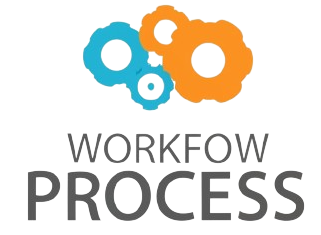Think of RTCROS like a project manager — direct, structured, and goal-driven. When navigating the complex world of robotics, software development, or any intricate system involving real-time processes, clear coordination is essential. RTCROS, the Robot Technology Component framework integrated with ROS (Robot Operating System), serves a role similar to that of a seasoned project manager. It organizes, delegates, schedules, and monitors software components efficiently, ensuring that every piece communicates effectively and tasks are executed promptly. In this article, we will explore how RTCROS embodies the qualities of a project manager by examining its structured approach to task coordination, its direct communication methods, its goal-centric design, and finally, how these traits support seamless integration in real-world applications.
Structured coordination: organizing complexity with clarity
A project manager’s strength lies in breaking down complex projects into manageable tasks and assigning them appropriately. Similarly, RTCROS brings structured coordination to robotics software by creating modular components, each responsible for specific functions. This modularity reduces complexity by defining clear interfaces and responsibilities. For example, in an autonomous delivery robot, RTCROS might separate components for navigation, obstacle detection, and route planning. Each part runs independently but communicates via well-defined messages, making troubleshooting and upgrades straightforward.
Real-world example: A factory implemented RTCROS to manage multiple robotic arms performing different assembly tasks. By segmenting control into discrete modules—grip control, position tracking, and quality inspection—the system made rapid adjustments without the entire operation stalling. Just like a project manager reallocates resources when needed, RTCROS manages components to optimize workflow.
Direct communication: clear and efficient interactions
Just as a project manager ensures team members communicate clearly and promptly, RTCROS emphasizes direct communication between components. This involves using standardized messaging formats and protocols to send requests, commands, or status updates instantly. The framework supports synchronous and asynchronous messaging, allowing components to react immediately to changes or batch-process data when appropriate.
Practical case study: Consider an agricultural drone that uses RTCROS to coordinate image capturing and soil sampling. The camera module sends data directly to the processing module, which triggers immediate adjustments in flight path for optimal coverage. This direct line of communication minimizes latency, much like a project manager reducing delays by insisting on concise, face-to-face check-ins.
Goal-driven execution: achieving outcomes with focus
A successful project manager keeps the team focused on end goals rather than getting bogged down by processes. Similarly, RTCROS components are designed to achieve specific goals with clearly defined outcomes and performance metrics. Each component knows its role in the bigger picture and uses feedback mechanisms to refine its performance toward that goal.
Scenario example: In a search-and-rescue robot, RTCROS components could include environmental mapping, victim detection, and path recalculation modules. The entire system dynamically prioritizes victim detection over mapping if someone is found, reflecting a goal-driven approach. This focus ensures the robot adapts in real time, prioritizing mission objectives above modular routine tasks.
Integration and flexibility: adapting to complex environments
Similar to a project manager balancing diverse teams and shifting project scopes, RTCROS offers flexibility and integration with existing ROS tools and external libraries. It allows teams to reconfigure components quickly as project requirements evolve. This flexibility is critical in robotics, where hardware or task changes often require software adjustments without redoing the entire system.
Real-world situation: A university research team developing a multi-functional service robot used RTCROS to integrate different sensor platforms over time. When a new LiDAR sensor was added, the component for obstacle avoidance was swapped seamlessly without disrupting navigation and manipulation modules. This adaptability mirrors a project manager adjusting timelines and assignments to incorporate new specialties or resources.
| Project Manager Qualities | RTCROS Equivalent | Real-life example |
|---|---|---|
| Organizes complex tasks | Modular component architecture | Factory robotic arms broken into control modules |
| Ensures clear communication | Standardized messaging and protocols | Agricultural drone’s camera and processor coordination |
| Focuses on goals | Goal-oriented component design with feedback | Search-and-rescue robot prioritizing victim detection |
| Adapts to changes | Flexible integration with ROS and external tools | Research robot upgrading sensors seamlessly |
Conclusion
Just like a trusted and effective project manager, RTCROS combines direct communication, structured task management, goal-oriented execution, and integration flexibility to orchestrate complex robotic systems successfully. Its modular design breaks down complicated software into manageable units, its messaging protocols ensure efficient interaction, and its focus on clear goals helps prioritize tasks dynamically. Moreover, RTCROS’s adaptability allows teams to evolve their projects smoothly without overhauling the entire architecture. Understanding RTCROS through the lens of project management reveals why it is essential for building reliable, scalable, and efficient robotic software. For developers and engineers, thinking of RTCROS as the project manager behind their robotic systems offers a practical framework to plan, coordinate, and execute cutting-edge solutions with confidence.
